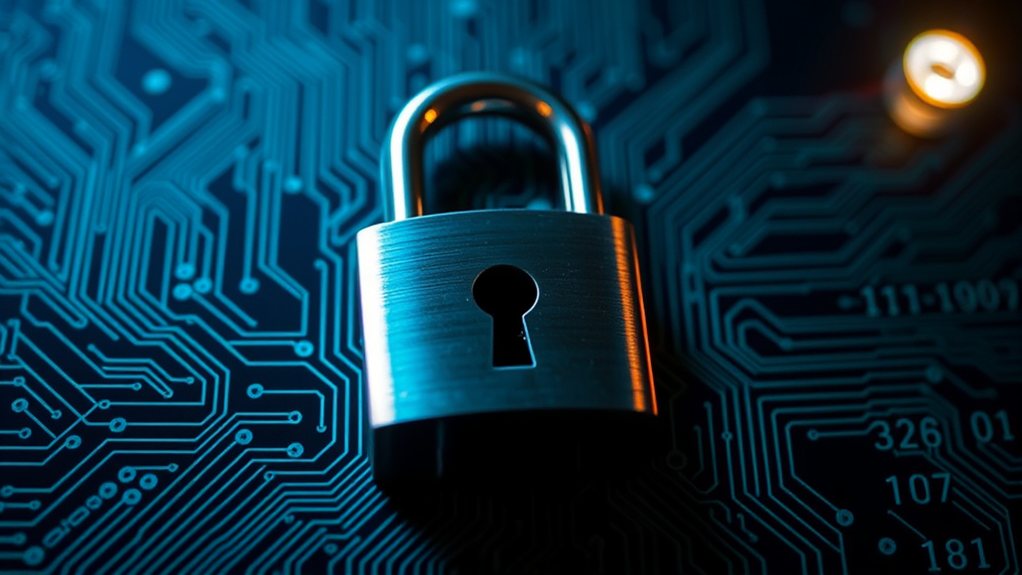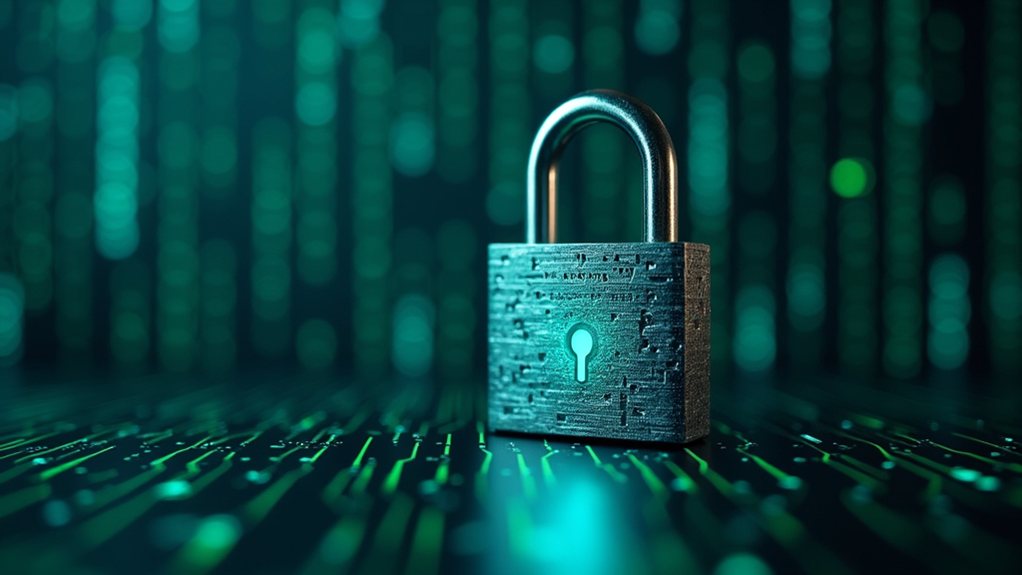Cryptography is the science of protecting information by transforming it into unreadable formats using mathematical algorithms and keys. It's derived from Greek words meaning "hidden writing." Modern cryptography secures digital data through four core principles: confidentiality, integrity, authentication, and non-repudiation. It uses various methods like symmetric encryption (one key), asymmetric encryption (public/private keys), and hash functions. The field continues to evolve as new threats emerge from quantum computing.

The secret world of codes and ciphers has evolved into what we now call cryptography. This science protects information by transforming readable data into an unreadable format using mathematical algorithms and special keys. The word "cryptography" comes from Greek, combining "kryptos" meaning hidden and "graphein" meaning writing. Today, it's essential for keeping information secure in our digital world.
Cryptography works on several core principles. It guarantees confidentiality by preventing unauthorized access to information. It maintains integrity by making sure data isn't altered during transmission. Authentication verifies the identity of senders and receivers. Non-repudiation prevents people from denying they sent or created a message. Key management handles the secure creation, storage, and distribution of the keys used in encryption.
The foundation of modern cryptography lies in its five pillars: confidentiality, integrity, authentication, non-repudiation, and secure key management.
There are several types of cryptography in use today. Symmetric-key cryptography uses the same key for both encryption and decryption. Asymmetric-key cryptography uses different keys – a public one and a private one. Hash functions are one-way operations that verify data integrity. Digital signatures guarantee authenticity, while key exchange algorithms allow secure sharing of cryptographic keys. A robust cryptographic approach always employs multiple encryption methods to strengthen overall system security.
Common algorithms include AES (Advanced Encryption Standard), which uses 128, 192, or 256-bit keys for symmetric encryption. RSA (named after its creators Rivest, Shamir, and Adleman) is an asymmetric system using public keys. DES (Data Encryption Standard) is an older system with a 56-bit key, now replaced by AES. ECC (Elliptic Curve Cryptography) uses elliptic curves for public-key encryption. The SHA (Secure Hash Algorithm) family creates digital fingerprints of data. The Caesar cipher represents one of the oldest and simplest forms of symmetric encryption with a fixed shift of three positions in the alphabet.
Cryptography isn't new. Ancient civilizations used simple substitution ciphers to hide messages. During World War II, the Enigma machine created complex codes that required massive efforts to break. The 1970s saw the development of DES and public-key systems. When the internet boomed in the 1990s, cryptography became widely used. The 21st century has brought quantum cryptography and post-quantum algorithms.
Today, cryptography secures internet communications through protocols like HTTPS. It protects sensitive data in storage and enables digital signatures for document authentication. It's the backbone of cryptocurrency and blockchain technology. Military and government communications rely heavily on cryptographic methods.
Looking ahead, cryptography faces challenges from quantum computing, which threatens current systems. Researchers are developing quantum-resistant algorithms, homomorphic encryption for computing on encrypted data, and lightweight cryptography for IoT devices. The field continues to evolve, balancing strong security with performance and usability in our increasingly connected world.
Frequently Asked Questions
How Does Quantum Computing Affect Modern Cryptography?
Quantum computing threatens modern cryptography through its ability to break widely-used security systems.
Today's encryption methods like RSA and ECC won't stand a chance against powerful quantum computers, which could crack codes in days instead of years.
While symmetric encryption like AES is less vulnerable, organizations worldwide are racing to develop "quantum-resistant" algorithms.
NIST has selected four such algorithms and aims to finalize standards by 2024.
Can Cryptography Be Truly Unbreakable?
Truly unbreakable cryptography exists in theory but faces real-world challenges.
One-time pads are mathematically unbreakable but impractical for everyday use. Quantum cryptography offers theoretical perfect security, but implementation vulnerabilities remain.
Most modern encryption isn't truly unbreakable—it's designed to be computationally secure, meaning it would take too long or cost too much to break.
Human error and hardware weaknesses often compromise otherwise strong cryptographic systems.
What Careers Require Cryptography Knowledge?
Cryptography knowledge opens doors to many careers across different fields.
Government agencies like the NSA hire cryptanalysts to decode secret messages. Banks employ security engineers to protect financial data. Tech companies need cryptography engineers to secure their products.
Universities and research centers hire professors and researchers to develop new encryption methods. The military, financial services, technology industry, and academia all value these specialized skills.
How Difficult Is It to Create Your Own Encryption System?
Creating a secure encryption system is extremely challenging. Experts say it requires deep knowledge of mathematics and computer science.
Even skilled developers often make mistakes that hackers can exploit. Most homemade encryption systems contain serious flaws that aren't immediately obvious.
That's why security professionals don't recommend building custom encryption. Instead, they rely on established algorithms that have been tested by the global security community.
Is End-To-End Encryption Vulnerable to Side-Channel Attacks?
End-to-end encryption systems remain vulnerable to side-channel attacks despite their strong protections.
These attacks don't break the encryption directly but exploit information leaks through timing, power usage, and electromagnetic emissions. When users type messages or process data, their devices might reveal patterns that attackers can analyze.
Even well-designed E2E systems can expose metadata about communications, creating security risks that developers must continuously address.










